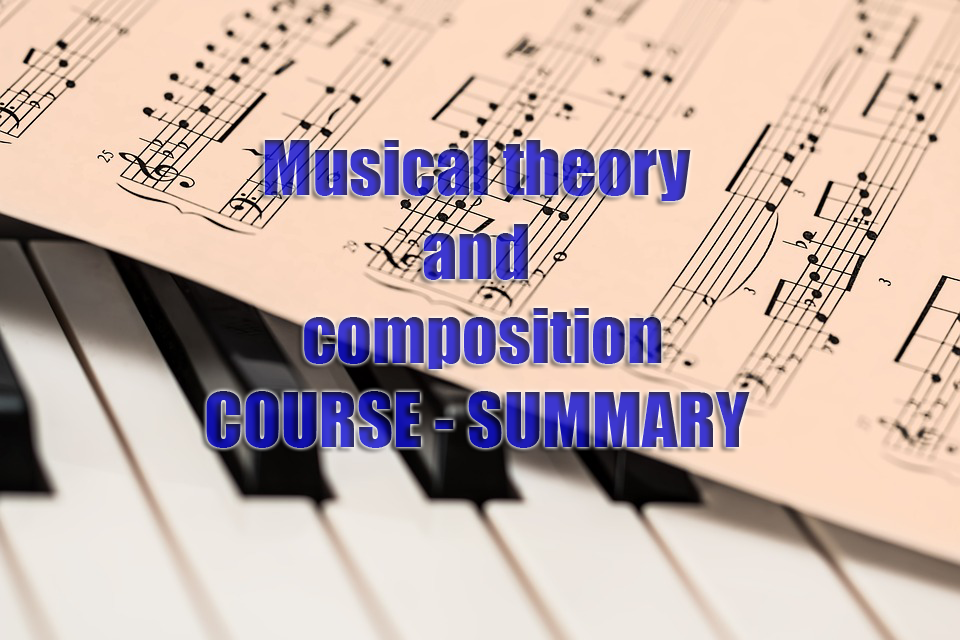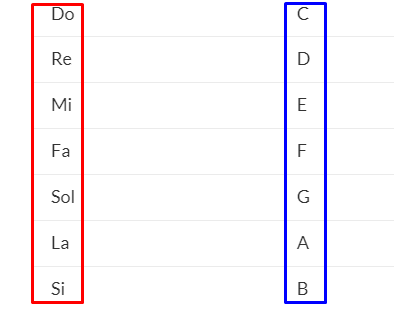Hello to all users of the hive Music community, on this occasion I plan to bring you a small course on musical composition which will include many theoretical and practical topics on musical composition, this is not a contest, I only do it to teach my knowledge and that the Interested people can share their experience of what they have learned.
I hope it will be widely accepted and that all the users of this community take the initiative to follow this course and do the tasks that I am going to propose in each chapter of the course.
It is important to emphasize that this course is a Basic or beginner level and after completion we will explore more things to achieve a complete musical understanding.
This course will be divided into 10 chapters which I will teach music theory and I will propose practices so that people interested in learning can do them and I will give a small personal opinion to each of their works. I plan to go from 0 to 100 in several weeks. I hope you join this idea and share what you have learned. If you are someone advanced in music theory, you can support me in the observations of those interested in learning.
summary
Chapter 1
- What is tonal music?
- What is a tone?
What is a semi tone? - What is a scale
How is a scale composed? - Major and minor scale overview
Episode 2
- Major scale and its characteristic
- Creation of chords
- How to compose a tonal sequence
- C major scale
- Chromatic scales
Chapter 3
- Minor scale and its characteristic
- circle of fifths
- Creation of a song in major keys
Chapter 4
- Compass
- Harmonization
- Weather
- Creation of a song in 4 / 4
Chapter 5
- Creation of melodies
- Use of scales
- Key notes
- Creation of a song with melody
Chapter 6
- Negative Harmony
- Creation of a song with negative harmony
- Harmonization with Negative Harmony
- create a song with Negative harmony
Chapter 7
- Compose a song with the topics learned
Chapter 8
- Improvisation
- Improvisation with scales
- Improvisation with chromatic scale
Chapter 9
- Harmonic scale
- Harmonic scale code
- Harmonic minor scale
Chapter 10
- Classical music
- Use of the minor harmonic scale in classical music
- Characteristic of the harmonic minor scale
- Create a classical song
Before I say goodbye, I can't stop explaining the musical notes. This is one of the most tedious and boring topics, but believe me, it's the basis of everything.
The notes
But to begin it is necessary to know that there are two ways in which the notes are written either in a score or a song with chords or a sequence of chords, what matters here is that there are two ways of writing them and these are by music note and by American encryption in this image we see the reference of both
As we can see on the left side and highlighted in a red box we find the form of writing in the form of notes, while on the right side in blue it is written in American encryption, As we can see
- The note DO is equivalent to C
- The note RE is equivalent to D
- The note MI is equivalent to E
- The note FA is equivalent to F
- The note SOL is equivalent to G
- The note LA is equivalent to A
- The grade SI is equivalent to B
We see that these notes are the main ones but in reality they are not all the notes that exist since there are 12 notes in total as long as we are talking about tonal music which they are.
- DO - C
- DO - C#
- RE - D
- RE - D#
- MI - E
- FA - F
- FA# - F#
- SOL - G
- SOL# - G#
- LA - A
- LA# - A#
- SI - B
Analyzing what was previously written, we can see that each note has its sustained note, the DO (C) has its sustained DO, which is DO# (C#), the RE (D) has its D-sharp, RE# (D#), and so on, but more detail Significant is that the note MI ( E ) and SI ( B ) do not have sharp notes. And it is an important detail to keep in mind.
conclusion
As we can see, tonal music has 12 notes and not 7 as many believe and this is the most correct way to learn music since it is very useful when composing and following a sequence of scales that will make everything sound more in line with what we are looking for remembering that each scale and each mode gives a different feeling in the music, in chapter one, apart from touching the issues raised, I will conclude this part of the notes explaining what are the notes with Flat and the importance of these in the music tonal and above all in musical theory.
I hope you liked this brief introduction of what is to come and that many are interested in learning, I will try to make the course as pleasant as possible.
Task for those who are interested.
Please
ANSWER IN THE COMMENT BOX,
Try not to cheat in order to learn.
How many musical notes are there in tonal music?
Although it was not explained in today's class, can you identify what is a tone and a semitone?
Tips to improve?
Thanks for reading me.


Tienes un voto de spaminator en esta publicación, por tanto te recomiendo dirigirte a su canal de Discord para ponerte al día y establecer lo que debes hacer para no seguir recibiendo estos votos que indican que has cometido algún tipo de infracción.
Saludos.
El ahí me indica que cosa estoy haciendo